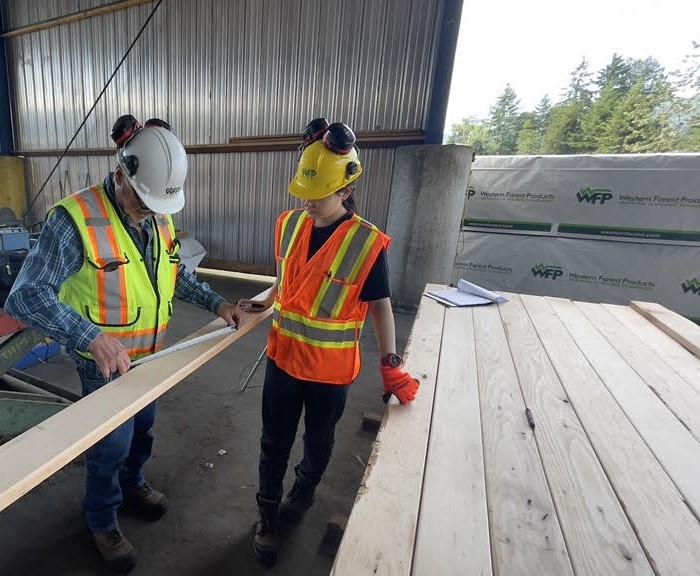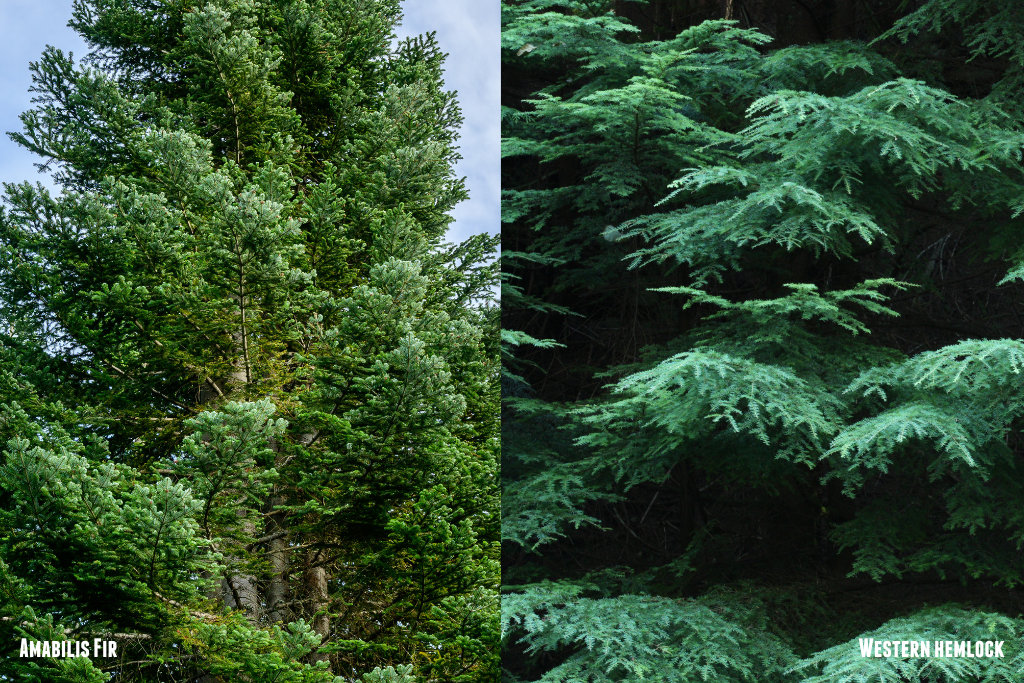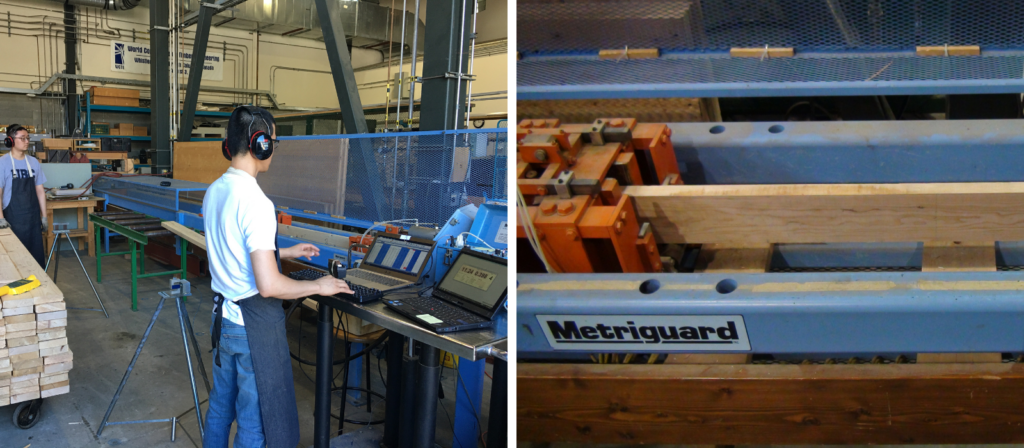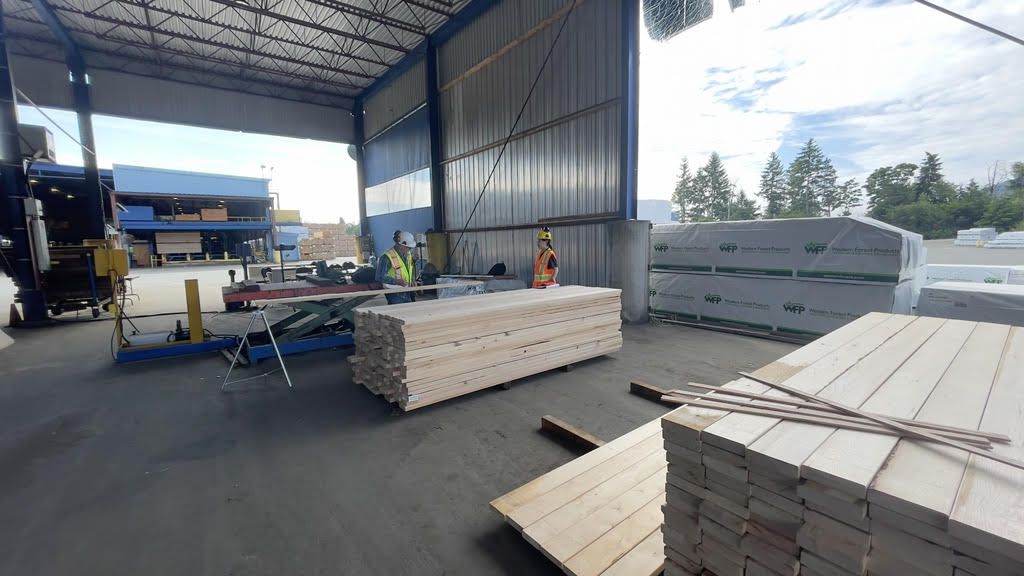This profile, featuring Western Forest Products, is the first in a series of articles showcasing Pacific HemFir’s building performance, quality and environmental credentials.

Western Forest Products Mike Andrews combines years of practical quality control experience with knowledge of young UBC wood scientist Irene Xiang to supply sample Pacific HemFir lumber for testing. Image courtesy of Western Forest Products
Pacific HemFir has long been overlooked in favour of the other species it shares the forest with, like Cedar and Douglas fir. But today, Pacific HemFir is taking its rightful place as a high performance and quality wood product with a key role to play in the growing mass timber market.
Pacific HemFir is one of British Columbia’s most abundant and underutilized coniferous species. It gets its name from the fact it is a combination of Western hemlock (Tsuga heterophylla) and Amabilis fir (Abies amabilis). These two species grow in the same forest areas and are nearly identical in appearance and performance. As a result, they are harvested, manufactured, and marketed together as Pacific HemFir.
Traditionally, glulam has been manufactured mainly with Douglas fir, southern yellow pine, and yellow cedar (or Alaskan cedar as it’s known in America). Although Pacific HemFir is plentiful on the coast of British Columbia, only a small percentage has been used in glulam manufacturing.
“There are not a ton of barriers towards using HemFir or any other species in a cross-laminated timber (CLT) application. You have to dry it to the right moisture content, but the substrate requirements are a relatively low bar. Where we saw the opportunity was in the beams and columns that support CLT, which is glulam,” explains Martin Kincade, Director of Product Optimization at Western Forest Products.
“We’re trying to get out ahead of the curve with an application we think suits HemFir’s unique attributes, largely motivated by the fact that 60 to 65 percent of our resource is HemFir,” he adds.
Pacific HemFir has several significant advantages over some of the other species being used in engineered wood products. It is generally stronger, stiffer and glues well. Pacific HemFir also takes a stain well because it is non-resinous and free from pitch.
Carpe Diem: B.C.’s Passion for Mass Timber
As B.C.’s largest coastal wood product manufacturer, Western has been at the forefront of advancing Pacific HemFir innovation and product development.
“We started to get interested in this as the talk of mass timber started to grow,” recalls Kincade. “We’re asking, ‘How do we take our business to the next level instead of being producers of squares and rectangles?’”
Last year, Douglas Todd wrote in his Vancouver Sun Opinion article, “More mass-timber wooden buildings have been built in B.C. than in almost the entire United States. A total of 307 of the environmentally friendly, laminated wooden buildings have been constructed in B.C., compared to 356 in all of the U.S.” He credits the B.C. government’s Mass Timber Action Plan for the growth of these projects.
Through the Mass Timber Action Plan, the province is working to grow the industry, create good jobs and support communities by engaging with First Nations partners, training new workers, modernizing regulations, and profiling mass timber to national and global markets.
Industry-Research Partnerships Key to Future
Western has a longstanding partnership with the University of British Columbia’s (UBC) Dr. Frank Lam and his team at the Department of Wood Science. Together they are developing design values for Western hemlock and HemFir glulam timber, with financial support from Forestry Innovation Investment (FII). Dr Lam and his team at UBC are well known as Canadian and global leaders in teaching and research on forestry, wood products manufacturing, and wood technology. The hope is that this work will lead to new markets and new applications, like glulam, for underutilized Pacific HemFir resources in B.C.
“The future of the coastal forest industry depends on continual innovation and close working relationships between researchers and industry partners,” says Dr. Lam.

Images courtesy of naturallywood.com
A Smart Climate Solution
Growing trees remove carbon dioxide from the atmosphere and durable Pacific HemFir products provide long-term storage of this carbon. Building more with wood, when paired with region-specific forest management practices, can deliver significant emissions reductions for the province, according to the Pacific Institute for Climate Solutions. Under the best-case scenario modelled by the researchers, they concluded that BC’s forestry sector could potentially contribute to 35 percent of the province’s 2050 emissions reduction target.
The fact is that wood is the only major building material that is renewable. All harvested Pacific HemFir forests are replanted promptly. In B.C 200 million seedlings are planted annually. On average, Western plants about 4 million trees; that’s three trees for every one that is harvested. When it comes right down to it, increasing our use of wood products over non-renewable, carbon-intensive materials and maximizing their reuse and recycling is a smart climate solution.
Standards Need to Evolve with Product Innovation
Pacific HemFir’s unique qualities as a combination of Western hemlock and Amabilis fir is also a challenge. While the industry association responsible for Glulam standards in the US, the APA, has had hemlock glulam specifications for some time, the same doesn’t hold true in Canada.
According to the research to date, Canadian glulam manufacturing standard CSA O122 and design code CSA O86 don’t recognize the use of HemFir alone in making glulam. These standards require that HemFir as a species be used with Douglas Fir-Larch (HemFir in inner zones), or Western hemlock must be used without any mixture of Amabilis fir. As UBC’s researchers point out, “the mixed use of HemFir with Douglas Fir-Larch is not practical.”
It follows that their research project is investigating these issues and aims to generate design values for glulam made from Western hemlock alone or with HemFir (without mixing with Douglas Fir-Larch). The hope is that this will provide important information for the standards’ next updates, which will vastly expand the use of Pacific HemFir.

UBC Department of Wood Science researchers conducting tension strength test of Pacific HemFir laminae. Images courtesy of UBC Department of Wood Science
Getting the Recipe Just Right
A big focus now for Pacific HemFir is doing in-depth research to better understand its fibre composition, including where the fibres are weaker or stronger and then developing ‘recipes’ for optimal glulam production and performance. In addition, Western is investing in its kiln drying capacity and equipment to measure the strength, stiffness, and density of lumber. All of this is in support of commercializing Pacific Hem-Fir glulam.
Kincade is optimistic about Pacific HemFir’s potential in the evolution of mass timber building products. “We make all sorts of different sizes and cross sections in our sawmills and we’re good at that which means when we have to adapt, or evolve, to now produce substrate that’s going into an engineered beam, we know how to do that.”
